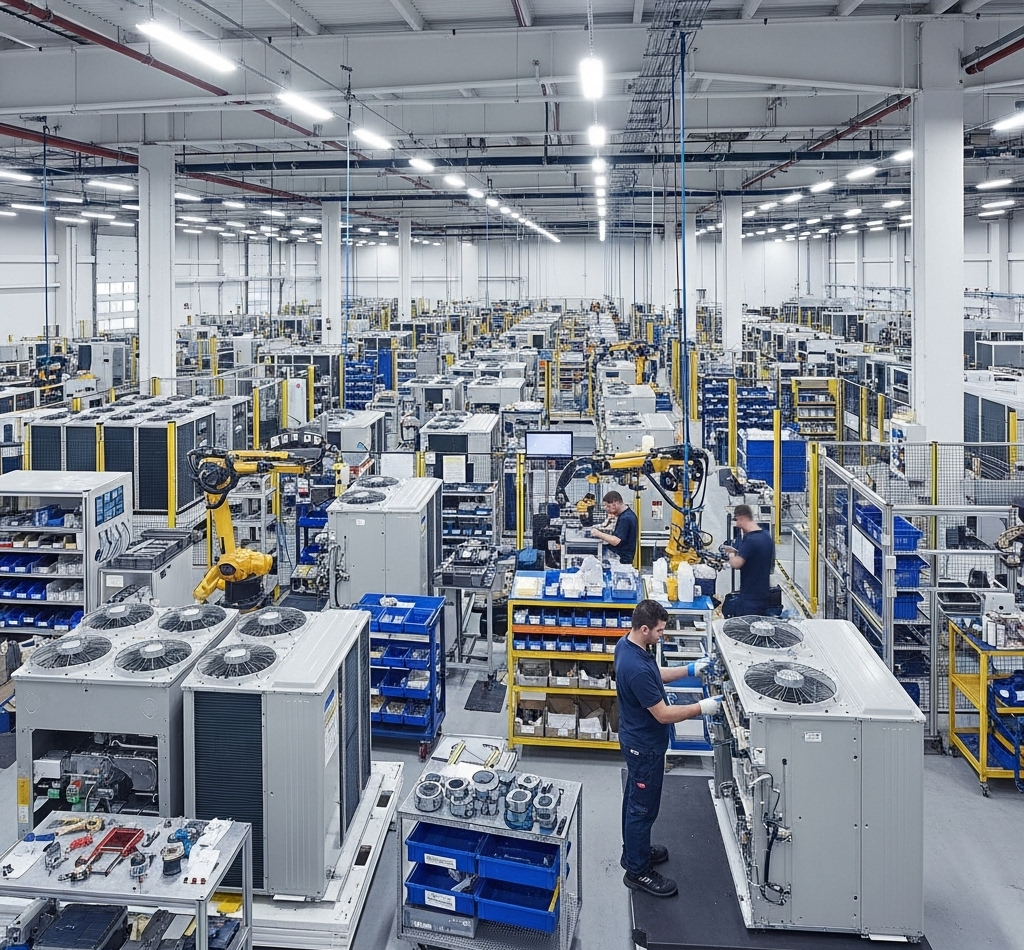
In the rapidly evolving HVAC industry, modular and custom builds are gaining traction due to their flexibility, efficiency, and ability to meet specific project demands. However, delivering these tailored solutions requires a robust procurement strategy that can keep pace with dynamic requirements. Agile procurement offers a transformative approach, enabling HVAC manufacturers and contractors to streamline processes, reduce lead times, and ensure high-quality outcomes. This blog post explores how agile procurement supports modular and custom HVAC builds, driving innovation and efficiency.
Modular HVAC systems, characterized by pre-engineered components that can be assembled on-site, offer scalability and adaptability for diverse applications, from commercial buildings to industrial facilities. Custom HVAC builds, on the other hand, are designed to meet unique specifications, such as precise temperature control or space constraints. Both approaches demand a supply chain that can handle variability without sacrificing speed or quality.
Traditional procurement methods, often rigid and linear, struggle to accommodate the dynamic needs of modular and custom projects. Long lead times, misaligned supplier schedules, and inflexible contracts can delay projects and inflate costs. Agile procurement addresses these challenges by prioritizing flexibility, collaboration, and responsiveness.
Agile procurement is a methodology inspired by agile project management principles. It emphasizes iterative processes, real-time collaboration, and adaptability to changing requirements. Unlike traditional procurement, which relies on fixed contracts and long-term planning, agile procurement enables rapid adjustments to sourcing strategies, supplier partnerships, and inventory management. Key principles include:
Iterative Sourcing: Breaking procurement into smaller, manageable cycles to address immediate needs while planning for future requirements.
Collaborative Partnerships: Working closely with suppliers to align on project goals and ensure timely delivery of components.
Data-Driven Decisions: Leveraging real-time data to optimize inventory, reduce waste, and anticipate supply chain disruptions.
Flexibility: Adapting to design changes or unexpected challenges without derailing project timelines.
By applying these principles, agile procurement aligns perfectly with the demands of modular and custom HVAC builds.
Modular HVAC systems rely on pre-fabricated components that must be delivered just-in-time to maintain project schedules. Agile procurement enables rapid sourcing by maintaining a network of responsive suppliers and using real-time data to track availability. For custom builds, where unique components may require specialized manufacturing, agile procurement facilitates quick negotiations and expedited production schedules, minimizing delays.
Custom HVAC projects often involve iterative design changes as client needs evolve. Agile procurement supports this by allowing procurement teams to source alternative materials or suppliers without lengthy renegotiations. For example, if a client requests a specific type of energy-efficient compressor mid-project, agile procurement ensures the component is sourced quickly without disrupting the build process.
By reducing excess inventory and minimizing delays, agile procurement lowers costs associated with storage, waste, and project overruns. Its iterative approach also allows teams to test supplier options in smaller batches, ensuring cost-effective choices without committing to large, risky contracts upfront.
Agile procurement fosters strong relationships with suppliers through regular communication and shared goals. For modular builds, this ensures a steady supply of standardized components. For custom projects, it enables suppliers to provide input on material availability or alternative solutions, enhancing innovation and problem-solving.
Supply chain disruptions, such as material shortages or geopolitical issues, can derail HVAC projects. Agile procurement mitigates these risks by maintaining a diverse supplier base and using predictive analytics to anticipate potential bottlenecks. This proactive approach ensures continuity even in volatile markets.
To successfully integrate agile procurement into modular and custom HVAC builds, consider the following steps:
Build a Flexible Supplier Network: Partner with suppliers who can accommodate rapid changes and provide high-quality components. Diversify the supplier base to reduce dependency on a single source.
Leverage Technology: Use procurement software to track inventory, monitor supplier performance, and analyze market trends. Tools like ERP systems or cloud-based platforms enable real-time decision-making.
Adopt Iterative Planning: Break procurement into short cycles aligned with project milestones. This allows teams to adjust sourcing strategies as designs evolve or new requirements emerge.
Foster Collaboration: Establish regular check-ins with suppliers, designers, and contractors to align on project needs and address challenges proactively.
Monitor and Adapt: Continuously evaluate procurement performance using KPIs like lead time, cost savings, and supplier reliability. Use insights to refine processes for future projects.
While agile procurement offers significant benefits, it’s not without challenges. Resistance to change, lack of supplier alignment, or inadequate technology can hinder implementation. To overcome these:
Train Teams: Educate procurement staff on agile principles to ensure buy-in and effective execution.
Align Suppliers: Clearly communicate project goals and expectations to suppliers to foster collaboration.
Invest in Technology: Adopt user-friendly procurement tools to streamline processes and enhance visibility.
As modular and custom HVAC builds become the norm, agile procurement will play a pivotal role in shaping the industry’s future. By enabling faster, more flexible, and cost-effective sourcing, it empowers manufacturers and contractors to deliver innovative solutions that meet evolving client needs. As technology advances, tools like AI-driven supply chain analytics and blockchain-based supplier verification will further enhance agile procurement, making it a cornerstone of HVAC project success.
© 2025 Lasso Supply Chain Software LLC
Get instant access to our report on the Top Procurement Trends of 2025.
Get instant access to our report on the Top Procurement Trends of 2025 by filling out the form below.
